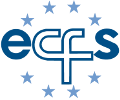B. Fauroux1, E. Le Roux2,3, S. Ravilly2, G. Bellis3, A. Clément1.
1Pediatric pulmonology and INSERM U 719, Hôpital A Trousseau, 2Vaincre la Mucoviscidose, 3INED, Paris, France
Aims: Several short term studies have demonstrated that non invasive positive pressure ventilation (NPPV) is able to improve alveolar hypoventilation and gas exchange during wakefulness, sleep, physiotherapy and exercise in Cystic Fibrosis, but long term bene.ts have not been demonstrated. The aim of the study was to evaluate the benefit of NPPV in patients with severe lung disease after one year of treatment.
Methods: Patients from the national CF registry who were started on NPPV (n = 53) were compared to matched controls (n = 53), one year before the initiation of NPPV, during the year of NPPV initiation, and after one year of NPPV treatment. Each patient of the NPPV group was matched with a control patient for gender, CFTR genotype, age ± 1 yr, weight ± 2 kg, FEV1 ± 10% predicted, and follow up in the same CF centre. For the 2 groups, the following parameters were compared one year before the start of NPPV (year -1), the year of NPPV initiation (year 0), and one year after the start of NPPV (year +1): weight, body mass index, vital capacity (VC), FEV1, arterial blood gases, number of intravenous (IV) antibiotic courses.
Results: At year -1, the 2 groups were comparable with regard to age, nutritional status, genotype, VC, FEV1, PaO2, PaCO2, the number of IV antibiotic courses and days with IV antibiotics. At year 0, the NPPV group had a significantly greater decline in VC and FEV1, more IV antibiotic courses. At year +1, the decline in VC and FEV1 was similar in the 2 groups, demonstrating a stabilisation of lung function decline in the NPPV group.
Conclusion: These data show for the first time that NPPV is associated with a stabilisation of the decline in lung function in patients with severe lung disease.
